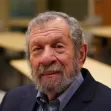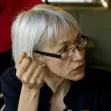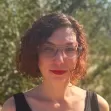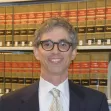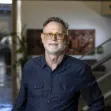VMT Reduction

New York State Climate Plan Stalls
Of 35 recommendations presented in the state’s climate scoping plan, just one has been implemented so far.

Applying the New Traffic Safety Paradigm
The new traffic safety paradigm recognizes exposure — total vehicle travel — as a risk factor, and therefore the additional casualties caused by planning decisions that induce more driving, and the safety benefits of VMT reductions.
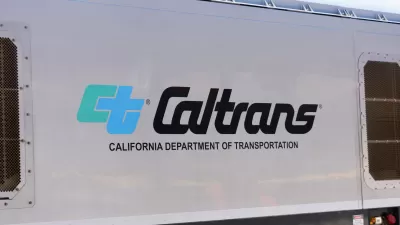
The ‘Three Pillars’ of Carbon Reduction, According to Caltrans
The California Department of Transportation released its draft carbon reduction strategy last month to apply for Carbon Reduction Program funds included in the Infrastructure Investment and Jobs Act. Road pricing plays a prominent role.
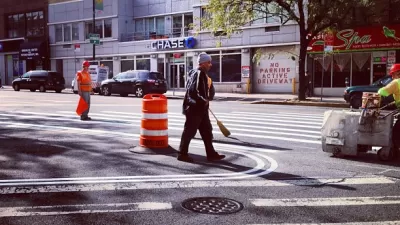
Vision Zero, Meet VMT Reductions
Many jurisdictions have vehicle miles traveled (VMT) reduction targets, intended to reduce congestion and pollution. They can also provide large but often overlooked traffic safety benefits.
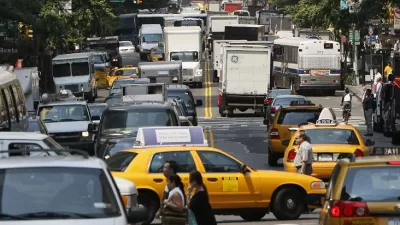
Fun With Statistics: Factors Affecting Motor Vehicle Travel
A few graphs provide insights into factors that affect the amount of motor vehicle travel in a community, and how driving can be reduced.

Breaking the Cycle of Automobile Dependency
Many current planning practices reinforce a cycle of increased automobile use, more automobile-oriented community redevelopment, and reduced mobility options. There are good reasons to break this pattern.
A New Era in California for Evaluating Transportation Emissions
An appellate court's rejection of SANDAG's $200 billion sustainable communities plan holds far-reaching implications for how regional planners evaluate greenhouse gas emissions from transportation to meet SB 375 requirements to the year 2050.
Montgomery County VMT Holds Steady—Despite 100,000 New Residents
Montgomery County, Maryland—located immediately to the north of Washington D.C.—is embracing the trend of driving less while opting for other forms of transportation.
LEED-ND Projects Reduce Driving, But Is There a Simpler Way to Measure Success?
New research by Ewing et al finds that vehicle miles traveled in LEED-ND projects may be as much as 60% lower than regional averages. However, objective models of transportation outcomes may prove more efficient than LEED’s points-based system.
Have You Noticed Fewer Cars on the Road Lately?
While the decline may not be visible, total auto ownership peaked in 2008 according to a new report by Michael Sivak of the University of Michigan's Transportation Research Institute. He set out to determine the cause - was it the economic recession?
Will CA's Famed Anti-Sprawl Law Block a Proposed Sacramento Project?
A proposed 2,700-acre development appears to conflict with the regional plan that complies with SB 375, a 2008 landmark law meant to reduce greenhouse gas emissions by reducing vehice-miles-traveled. The decision rests with the Board of Supervisors.
The Sustainable Transportation Divide
Grist's David Roberts attended a national conference on the future of transportation at Ohio State in early May and noticed a divide in the concluding discussion on how panelists approached the issue of sustainability in transportation.
A Glut Of Oil Refinery Capacity
Americans are driving less. Moreover, alternative fuels, be they electricity or biofuels, will become more common while efficiency of conventional vehicles increases. This article looks at the effect of the VMT reduction, et.al. on oil refineries.
Increased Transit Use Reduced Carbon Emissions by 37 Million Tons
A new report by Environment America suggests that increased ridership in 2008 reduced global warming gases significantly, and increasing ridership by 10% more could save the equivalent of all the oil we import from the Persian Gulf.
TRB Report Evaluates Densification & VMT Reduction
A new Transportation Research Board study examines the relationship between land use and carbon emissions - specifically reduction of vehicle miles traveled resulting from densification and the shape of new growth to come.
Urban Design for Planners 1: Software Tools
This six-course series explores essential urban design concepts using open source software and equips planners with the tools they need to participate fully in the urban design process.
Planning for Universal Design
Learn the tools for implementing Universal Design in planning regulations.
Gallatin County Department of Planning & Community Development
Heyer Gruel & Associates PA
JM Goldson LLC
City of Camden Redevelopment Agency
City of Astoria
Transportation Research & Education Center (TREC) at Portland State University
Jefferson Parish Government
Camden Redevelopment Agency
City of Claremont


























